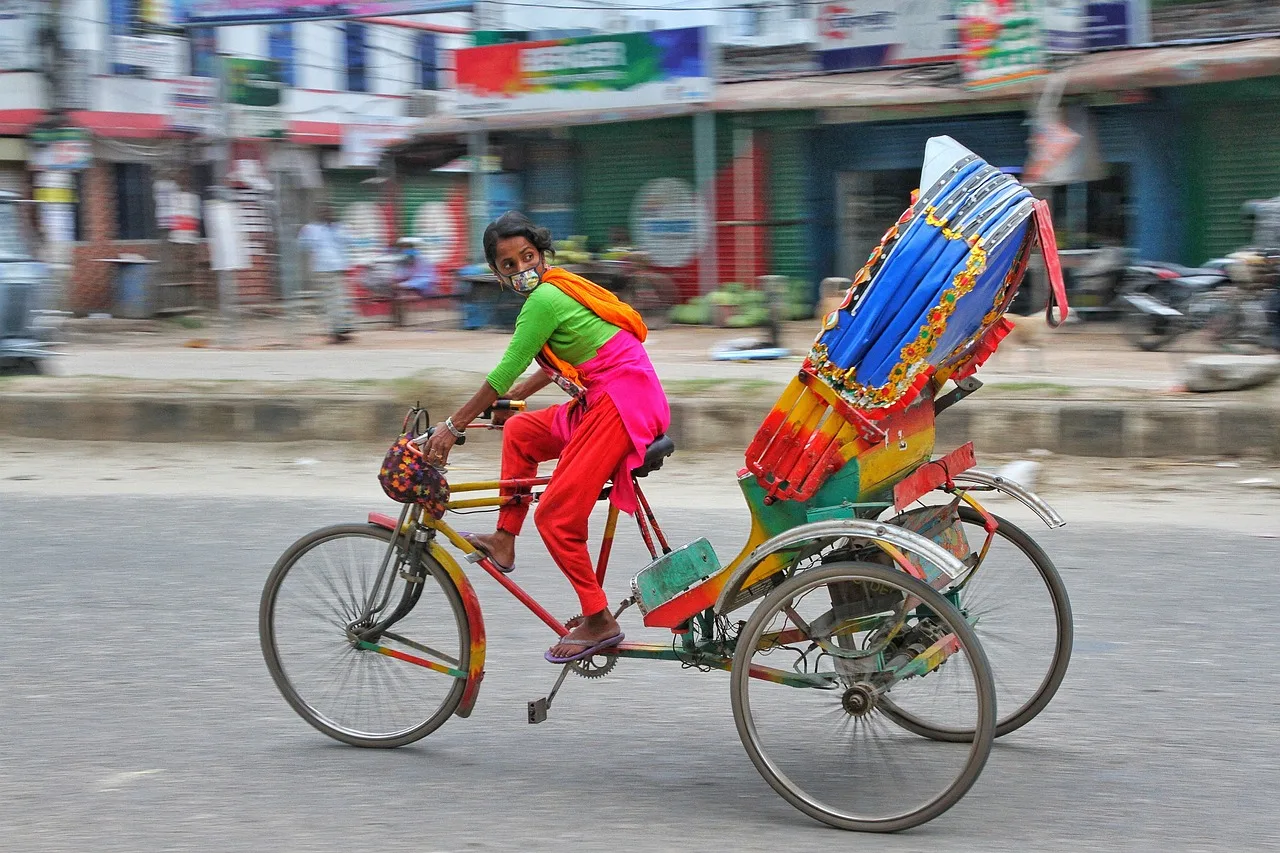Dhaka, capital of Bangladesh

Bangladesh - Why visit Dhaka?
Exploring Dhaka
Dhaka, the lively capital of Bangladesh, reveals itself as a city of contrasts, culture, and community. Situated along the banks of the Buriganga River, this dynamic metropolis pulses with life. From bustling markets to historic landmarks, Dhaka offers a rich tapestry of experiences that reflect the spirit of Bangladesh. For anyone visiting the country, Dhaka is impossible to overlook, so embrace its energy and discover its many layers.
Discovering Old Dhaka
Begin your journey in Old Dhaka, where narrow alleyways weave through centuries of history. This part of the city feels timeless, with ancient buildings standing beside modern life. The Lalbagh Fort, a 17th-century Mughal structure, welcomes visitors with its grand walls and peaceful gardens. It offers a glimpse into the region's architectural legacy and the stories that shaped it.
Nearby, Ahsan Manzil, often called the Pink Palace, stands as a striking example of Dhaka’s historical elegance. Once the residence of the Nawabs, it boasts ornate design and vibrant colours, making it a must-see. Inside, exhibits share insights into the lives of those who once lived there and the cultural shifts that followed.
Wandering through Shankhari Bazaar reveals another side of Old Dhaka. This area, known for its traditional Hindu artisans, showcases intricate jewellery, handwoven fabrics, and vibrant street scenes. The market’s energy reflects the city’s long-standing commercial traditions and the creativity of its people.
At the Sadarghat Riverfront, wooden boats glide across the Buriganga, carrying goods and passengers. This busy port offers a window into Dhaka’s river-based economy and the daily rhythm of life on the water.
Experiencing Modern Dhaka
Crossing from the historic core into the newer parts of the city, Dhaka transforms into a modern urban centre. Skyscrapers rise above the streets, and contemporary life unfolds in shopping malls, cafés, and cultural venues. The Jatiya Sangsad Bhaban, designed by renowned architect Louis Kahn, stands as a symbol of Bangladesh’s democratic aspirations and architectural innovation.
The National Museum provides a deeper understanding of the country’s journey. Its collections span ancient artefacts, liberation war memorabilia, and contemporary art, offering a comprehensive view of Bangladesh’s identity.
Dhanmondi Lake presents a peaceful contrast to the city’s fast pace. Locals gather here for walks, boat rides, and family outings. The lake’s calm waters and green surroundings create a space for relaxation and connection. It’s a reminder that even in a busy city, moments of tranquillity are never far away.
Dhaka’s food scene is another highlight. From sizzling street kebabs to rich biryanis, the city caters to every taste. Local eateries and food stalls serve up bold flavours and generous portions, making every meal a celebration of Bangladeshi cuisine.
Finding Calm in the City
Amid the hustle and bustle, Dhaka offers places of quiet reflection. The Star Mosque, or Tara Masjid, enchants visitors with its celestial-themed mosaics. Its delicate star patterns and serene atmosphere make it a unique architectural treasure.
Close by, the Armenian Church provides a peaceful retreat. Built in the 18th century, it stands as a testament to Dhaka’s religious diversity and historical connections. Its quiet courtyard and simple beauty invite contemplation.
Further along the river, the Lalbagh Shahi Mosque offers another glimpse into Mughal architecture. Though unfinished, its design and ambience create a space for spiritual reflection and appreciation of craftsmanship.
These sites remind visitors that Dhaka is not only a city of movement but also one of meaning. They offer opportunities to pause, reflect, and connect with the deeper rhythms of life.
A City of Connection and Contrast
Dhaka’s charm lies in its ability to blend tradition with progress. As you explore its streets, you’ll encounter warm welcomes, vibrant culture, and a sense of resilience. From the historic corners of Old Dhaka to the modern pulse of its newer districts, the city reveals itself in layers.
Each neighbourhood tells a story. Each landmark holds a memory. And each interaction adds to the experience of being in a place that is constantly evolving yet deeply rooted in its past.
Whether you’re admiring Mughal architecture, tasting local dishes, or watching boats drift along the river, Dhaka invites you to engage fully.
Practical Tips for Visiting Dhaka
To make the most of your time in Dhaka, consider these helpful suggestions:
- Best Time to Visit: The cooler months from November to February offer comfortable weather for sightseeing and outdoor activities.
- Getting Around: Rickshaws, taxis, and ride-sharing apps provide flexible transport options. Traffic can be heavy, so plan extra time for travel.
- Cultural Etiquette: Dress modestly, especially when visiting religious sites. A respectful attitude goes a long way in building positive connections.
- Language: Bengali is the official language, but English is widely understood in urban areas. Learning a few local phrases can enhance your experience.
- Safety and Awareness: Dhaka is generally safe, but it’s wise to stay alert in crowded areas. Keep valuables secure and follow local advice when exploring unfamiliar places.
Thoughts on Dhaka
Dhaka is a city that defies easy definition. It’s vibrant and complex, historical and forward-looking, chaotic and calm. For those willing to embrace its contrasts, it offers a deeply rewarding experience.
This capital city of Bangladesh invites you to look beyond the surface. It encourages curiosity, welcomes diversity, and celebrates life in all its forms. Whether you’re visiting for the first time or returning to explore more, Dhaka leaves a lasting impression.
Its streets, stories, and spirit stay with you long after you’ve moved on.
